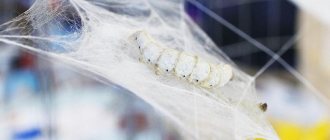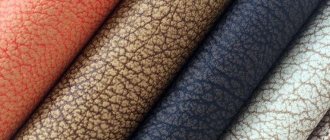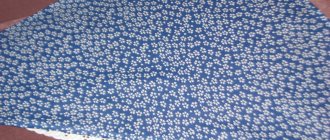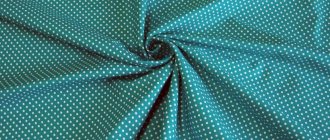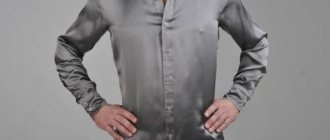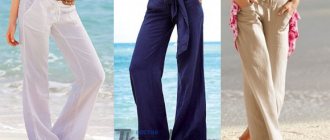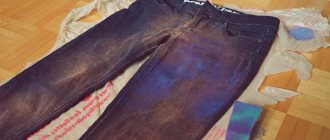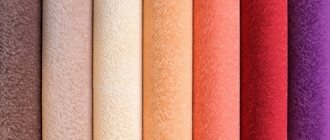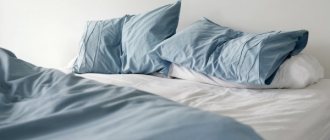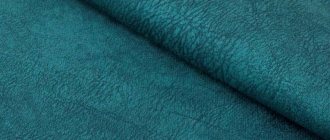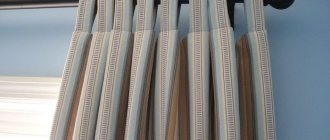The range of modern furniture textiles is amazing: the Russian market alone offers dozens of types of upholstery materials and leather of different categories. Such diversity also has a drawback - choosing the right fabric for furniture without knowing its characteristics is not easy. Experts argue that it is unreasonable to focus in this matter only on the cost or color of the upholstery; the composition and production technology of the material are more important. With the right approach, choosing upholstered furniture or fabric for decorating it should begin with studying all possible categories and their performance characteristics.
Material requirements
Technical requirements for upholstery fabric for furniture in the Russian Federation are regulated by GOST 24220, for leather - GOST R 53243. Textiles that do not meet the specified standards are produced with the manufacturer's specifications indicated. Fabrics are not included in the list of goods subject to mandatory certification in Russia, but to be allowed on sale they must receive a declaration of conformity with the requirements of the Customs Union. The quality of foreign products is confirmed by ISO tests.
During the examination, at least 4 tests are carried out:
- For abrasion, confirming the number of cycles of maintaining the pressure of a metal disk on the fabric. According to GOST 24220 standards, this characteristic must reach at least 3000 cycles, ISO - 5000. The higher it is, the better.
- For peelability, which determines the proportion of fiber loss after 5000 pressure cycles. Practice shows that peeling fabrics that can withstand no more than 500 abrasion cycles quickly form pellets, and vice versa.
- For color fastness, a scale from 1 to 8 points is used. The higher the score, the better.
- Fire resistance - the fabric does not catch fire when a cigarette is applied for at least 8-10 seconds.
According to GOST 24220, such characteristics as width (from 142 ± 2 cm), breaking load (at least 40 kgf), and elongation at break need to be checked. Separate requirements are put forward for density, resistance to chemicals, dirt and water repellency, permeability, and environmental friendliness. These indicators are selected solely based on the intended purpose of the furniture.
For comparison: for upholstery of non-used finishing elements of upholstered furniture, it is worth taking fabric with a wear resistance of 10,000 cycles, rarely used interior items - 10,000–15,000. Standard home upholstered furniture is covered with textiles with abrasion resistance of at least 15,000–25,000, frequently used products - from 25,000 to 30,000.
Furniture used in high-traffic commercial spaces or harsh environments requires fabric that can withstand at least 30,000 cycles.
Fire resistance test
Test of strength
Step-by-step instructions for replacing sofa upholstery
The sofa has rather large linear dimensions, which complicates the reupholstery process. Professional furniture makers recommend starting practical training on smaller types of furniture. One option is chair seating. The technology of work is no different, and the small size greatly facilitates and speeds up the process of acquiring skills. In addition, if some operation is unsuccessful, then a small piece of material will be damaged, material losses are insignificant. You have gained practical experience, you have confidence in all actions, do the corners fit without creases? Great, you can safely take on the sofa repair.
In our case, the constriction will be made with artificial leather. The sofa is located in the kitchen, and for such a room this is the optimal solution. The seat lining can be removed carefully and is in good condition for reuse.
Step 1
. Prepare your work area. Reupholstery can be done in the kitchen, the seat can be placed on a closed kitchen table or floor; this work does not produce a lot of dust.
Step
2
. Place the sofa piece on the table and check its condition.
Condition of the sofa before reupholstery
At the same time, decide on methods for fixing the fabric and take measurements.
Upholstery material
Prepare the tools and equipment required for the job. There are options for upholstery with furniture nails, but we strongly recommend using an ordinary spring stapler in all cases. It is easy and quick to work with, and the strength of the fixation is beyond doubt.
Step 3
. Remove the lining. The staples can be removed with a thin screwdriver; carefully insert them in the central part and lift them up. Often only one half is pulled out of the tree, the second has to be removed with pliers.
Lining
The upholstery is secured with staples that need to be pulled out
Often only one half is pulled out of the tree, the second has to be removed with pliers.
The staples are pulled out with pliers
Step 4
. Using the same method, remove the main upholstery.
Important. Collect old staples in a special container, do not scatter them throughout the room.
While moving, you can damage your legs, the staples are old, and there are a huge number of bacteria on the surface, including pathogenic ones. The consequences of leg injuries can be very sad.
For convenience, you can pry the staples with a screwdriver if you don’t have an anti-stapler
Step 5
. If the trim is stitched at the corners, then the seam must be cut.
Seam cutting
To stitch the corners, you need to take very precise dimensions of the seat; any mistake becomes critical, and you have to throw away the material and buy a new one. Another option is to make patches, but they significantly worsen the appearance of the sofa. We will not sew new upholstery; we will tell you how to carefully lay it. There will be no noticeable folds, and the work will be much simpler.
Step 6
. Remove the upholstery and inspect the condition of the soft cushion and seat lining. If they are worn out, then it is better to completely repair the seat. But such a decision had to be made even before the removal of the casing began; the presence of problems with the foam rubber is indicated by significant dips in the seat, lack of plasticity of the coating, etc. In our case, all the elements are in normal condition, we will not touch them.
Step 7
. Spread a new leatherette on the floor and carefully place the seat on it. Lift one edge slightly, check for wrinkles, and adjust the position of the upholstery if necessary.
Step 8
. Stretch the artificial leather and attach it to one side of the frame.
Tool used
Fastening material
You need to start from the middle, then fix it completely on one side, and then on the other. Work very carefully, constantly check the position of the upholstery; at this stage it is not yet secured and can move freely in any direction.
Trimming excess
Step 9
. Start fixing the upholstery on the opposite side of the seat. Stretch the material a little, and also start working from the middle of the frame.
Step 10
. Grab the middle along the long side of the seat. The algorithm of actions is the same; cut off the excess material with the tip of a mounting knife or scissors.
Step 11
. Proceed to the design of the corners. This is done in several stages.
- Straighten the material along the corner, hold it and grab part of the bend to the upper plane of the frame.
- Repeat the steps, only now align the upholstery horizontally. Twist the faux leather until the horizontal fold is evened out. Grab the material again.
- Finally tighten the corner and you can firmly fix the upholstery.
- Pull all remaining corners in the same way.
Decoration of corners
Decorated corner
Read on our website: how to choose a construction stapler. Detailed overview of popular models with characteristics.
Step 12
. Continue to tighten the seat around the entire perimeter, constantly monitoring the position of the material. If folds appear, they must be removed gradually; sharply increasing the tension force is strictly prohibited. The fact is that over time, these areas will in any case stretch a little, the tension force will weaken, and the folds will appear again.
Continuation of re-upholstery work
Step 13
. Replace the pad. At this point, the repair work on the seat is completed; you can place it on the frame of the sofa. The backs are pulled using the same algorithm.
Practical advice. You don’t have to sew the corners, but cut them and remove excess in the hem areas. But such actions require practice, if you do not have confidence, then it is better not to try.
Provided that all work on replacing the upholstery material is carried out carefully, the sofa will look like new.
Sofa after completion of work
The presence of a wide range of upholstery fabrics in stores allows you to give a second life to sofas. And not only restore their original appearance, but also significantly improve it. Modern fabrics are much superior to old samples in their performance parameters. Don’t think that once upon a time everything was better and more reliable, this is not true. But there are often situations when, after removing the old fabric, more serious problems with the sofa are discovered; on the pages of our website there is a detailed article describing methods for eliminating problems of varying complexity.
Video - How to change the upholstery of a sofa yourself
Categories
Depending on the base material, cost and performance properties, all furniture fabrics are conventionally divided into 9 categories.
| Cheap, lightweight textiles made from fragile or fluffy, soft threads (cotton, budget scotchgard, thermal jacquard), easy to care for, but short-lived | |
| 1 | Budget fabrics with a short service life (from fabric flock to faux suede), simple or no design |
| 2 | The same as in the first category, but more beautiful, durable and wear-resistant, with average prices |
| 3 | Textured fabrics with attractive designs, including high-maintenance tapestry or chenille |
| 4 | Artificial suede, fur, chenille with an optimal ratio of density, cost and quality |
| 5 | Dense, wear-resistant textiles based on natural materials with a stylish design, above average cost, high maintenance |
| 6 | Expensive leatherettes, arpatek, luxury fabrics with excellent performance characteristics |
| 7–8 | Exclusive natural materials with high elasticity |
The first three categories are used when it is necessary to frequently change the upholstery of sofas (for example, in the rooms of children and teenagers). Fabrics with categories 3–5 are used everywhere in everyday life. Textiles of category 6 are used to cover furniture in offices. Exclusive varieties are used for unlimited budgets and high design requirements.
Upholstery fabrics
Important characteristics and categories of fabrics
There are a number of requirements for materials used to upholster furniture. The main features of such fabrics:
- attractiveness;
- endurance;
- environmentally friendly, hypoallergenic;
- ease of care.
Note! In upholstery fabrics, such a property as lack of fading is valued. This allows you to safely place furniture in well-lit areas of the house.
Categories of domestic and foreign materials used in furniture upholstery:
| Categories | Description |
| 0-1 | The fabric is light, natural or synthetic. It is characterized as short-lived. The first category differs from zero by a slightly increased service life. |
| 2 | This furniture fabric is more durable, has a variety of designs and any colors. This material is almost not susceptible to the negative influence of various external factors. |
| 3 | This category includes products that require special care. The products have a complex texture. |
| 4 | High-density models serve for many years without changing their original appearance. They have decent quality and reasonable price. |
| 5 | Fabrics for furniture are pleasant to the touch, dense, wear-resistant. Made from a natural base. They have a high price. |
| 6 | This category includes prestigious materials. They are characterized by wear resistance and tolerance of intense loads. |
| 7-8 | Premium products. Serves for the maximum period. It has great strength and does not change in appearance for a long time. |
Upholstery fabrics 2-5 are most often used for home furniture. Products of at least 5-6 categories are suitable for office structures.
Classification
Conditional criteria taken into account when choosing fabrics for upholstery include composition, method of forming the front pattern and manufacturing technology of the fabric itself. The composition of the base material has a direct impact on shrinkage, wear resistance and environmental friendliness, and the method of pattern formation has a direct impact on the color fastness and decorative properties of furniture fabrics. Manufacturing technology affects all performance characteristics as a whole.
By composition
Depending on the base material, all furniture fabrics are divided into:
- Natural, made from linen, cotton, wool or jute. Fabrics of this group have better breathability and environmental friendliness, but are expensive. Disadvantages also include shrinkage, ease of maintenance, and low wear resistance. They are mainly used for children's sofas and expensive furniture that is placed in the living room.
- Synthetic, made from fibers of nylon, nylon, lavsan, acrylic or polyester. Their advantages include high wear resistance coupled with minimal shrinkage; their disadvantages include impermeability, toxicity, and static. Suitable for upholstering chairs and sofas in public places.
- Artificial, obtained by industrial processing of natural substances. This group includes viscose and its analogues, valued for their low cost, softness, hygroscopicity and permeability, but inferior to synthetics in resistance to external influences. Can be used for kitchen furniture.
Fabrics with a 100% natural composition are rarely used in everyday life, not least because of their high cost. Optimal performance for mixed fabrics. The current variety of types of furniture textiles is explained by the combination of natural, artificial or synthetic fibers and their proportions. The exception is high-quality polyester, which perfectly imitates the texture of natural fibers.
The best fabrics, designs for oversized furniture covers, nuances of choice
Artificial
Natural
Synthetic
According to the method of forming the front layer and applying the pattern
Depending on the chosen method of forming the front surface, woven and non-woven types of furniture textiles are distinguished. The first group includes tapestry fabrics, chenille, jacquard, some types of suede and other products with a pile covering missing or woven into the base. They are used for upholstery of sofas, beds and sewing covers. The second group is represented by brands that imitate suede; this also includes flock and leatherette. The fastening of the pile during their manufacture is ensured by an adhesive layer; the quality of the products largely depends on its chemical composition. Non-woven materials are more practical and are used in cases where there are children and animals in the house.
Depending on the method of pattern formation, woven and printed furniture fabrics are distinguished. The former are obtained by weaving multi-colored threads, the latter - using drum equipment or printers. Regardless of the chosen method of pattern formation, the quality of the fabric depends on the composition of the dyes and the durability of their fixation.
Woven face
Non-woven face
Printed drawing
Woven pattern
According to production technology
This criterion allows us to identify at least ten groups of fabrics for upholstery and upholstery of furniture. The list of the most popular types, taking into account the characteristics of their operation, is given in the table.
| Fabric name | Manufacturing technology, features | Advantages and disadvantages | Application |
| Jacquard | Interweaving longitudinal warp threads with transverse ones to obtain a textured, intricate pattern. Material can be mixed or multicolor | Pros: density, strength, stain resistance, pleasant texture. Cons: relatively high cost for quality brands, the need for exclusively dry cleaning | Suitable for most living spaces, provided there are no pets, in addition to being used for upholstering mattresses |
| Thermo-Jacquard | Dry thermal printing on white jacquard fabric | Pros: aesthetics. Cons: difficult to care for, intolerance to some cleaning products | The best option for kitchen chairs, sofas |
| Scotchgard | Natural jacquard treated with water-repellent impregnation | Pros: all the advantages of jacquard + water resistance and anti-vandal properties. Cons: risks of sun fading with cotton content above 50% | In kitchens, bathrooms and children's rooms |
| Gozhka | Compacted checkerboard with double or triple weave of cotton, polyester and/or acrylic fibers | Pros: affordable price, attractive appearance, wide range, wear resistance, easy maintenance. Cons: fading in direct sunlight, risks of snags | For sofas and armchairs located away from the sun |
| Tapestry | A technology similar to jacquard weaving with the addition of cross threads to create a more complex pattern. The share of natural fibers has been increased | Pros: resistance to external influences, including UV, diversity, versatility, antistatic properties, easy care. Cons: rigidity, intolerance to wet cleaning, risk of creases | For premium furniture |
| Chenille | Introduction to weaving fabric with silky thread, twisted in a spiral. The base consists of synthetic or mixed fibers (for example, viscose with cotton) | Pros: unique combination of softness and strength, hypoallergenic, practical, low shrinkage. Cons: expensive, average moisture resistance | It is used not only for furniture, but also for sewing curtains and wall upholstery |
| Flock | Non-woven material based on cotton and/or polyester with glued fibers tightly adjacent to each other | Pros: pleasant texture, waterproof surface, breathability, strength, resistance to tearing, UV and abrasion, anti-vandal properties, compatibility with any type of dyes. Disadvantages: attracts dust, fear of alcohol, high temperatures, petroleum products and a number of solvents (partially eliminated when treated with impregnations) | Ideal for kitchen and children's furniture |
| Velor fabrics | Weaving 5 threads (4 for the base, 5 for the pile), followed by cutting the fabric into 2 rolls, embossing or changing the length of the piles | Pros: aesthetics, softness, air permeability, low shrinkage. Cons: high cost of high-quality brands, quick abrasion of cheap velor, need for frequent dry cleaning | In the office, living room, for sofas and armchairs |
| Velveteen | Fixing fluffy pile on a dense base through complex weaving. The pattern is created by alternating rows, stripes, cells or grids, changing the height of the pile, and combining with a solid surface | Pros: durability, comfortable texture, environmental friendliness, low thermal conductivity, strength, elasticity, attractive appearance. Cons: shrinkage when washing, risks of grouting and fading, high cost | Suitable for beds, child seats and sofas |
| Microfiber | Dense fabric based on the finest (no more than 0.06 microns) polymer fibers | Pros: practicality, ease of care (even washing the covers in a machine), similarity in texture to natural suede, hypoallergenic, long service life. Cons: fear of high temperatures, higher than average cost | For armchairs, corner and regular sofas |
| Artificial suede (non-woven types) | The pile is glued to a blend of cotton and polyester fabric | Pros: no shrinkage, decorativeness, pleasant texture, resistance to fading. Cons: does not tolerate friction well, requires complex and frequent maintenance | For upholstery of any furniture: sofas, armchairs, chairs, banquettes, poufs |
| Alcantara, synthetic nubuck | Elite varieties of artificial suede, obtained thanks to modern technologies for spinning the finest fibers. They undergo multi-stage treatment with special compounds | Pros: unique strength and durability, rich appearance, silky texture. Cons: cost, fabric does not withstand contact with oily substances well | Most often, car interiors are covered with this fabric, but it is suitable for any furniture and looks especially good in an office. |
| Eco leather | Woven fabric with a polymer textured layer | Pros: strength, wear resistance, rich appearance. Cons: high cost of quality brands, fear of fire, risks of scratches | Sofas, beds, office chairs |
| Artificial fur | Combination of woven, knitted, stitching and adhesive processes | Pros: the ability to imitate the skins of various animals, the implementation of unique design ideas. Cons: accumulation of dust, strict prohibition on wet dry cleaning | Ideal for furniture covers |
Criteria for choosing European covers for upholstered furniture, color range of covers
A separate category includes natural types of leather, nubuck and suede. Despite all their advantages (ecological cleanliness, better air exchange rates, pleasant texture, rich appearance), due to their high cost, they are used only in the manufacture of exclusive upholstered furniture. Of these, only leather can be called practical.
Alcantara
Velveteen
Velor fabrics
Tapestry
Jacquard
Faux suede
Artificial fur
Microfiber
Gozhka
Scotchgard
Thermo-Jacquard
Flock
Chenille
Eco leather
Names and features of materials
Among the fabric materials used for upholstering furniture, there are natural and synthetic options. Some of them are mixed.
Velours
Included in the third category of materials for upholstery. Velor is pleasant to the touch and looks beautiful on any design. It often contains cotton or wool.
Advantages of velor:
- aesthetics;
- presence of antistatic properties;
- hypoallergenic;
- ease of care.
This fabric is quite expensive. At the same time, it is unstable to mechanical stress.
Microvelour
Belongs to the same type as velor. It differs from it in shortened pile and a different creation technology.
Microvelor consists of polyester. Sometimes it contains cotton or viscose. This matter is attractive in appearance. It is resistant to moisture and fading, repels dust and dirt. Microvelor looks like new for a long time. Its main disadvantage is the absorption of odors.
Velveteen
Categories of corduroy fabric for furniture – first or second. This is an environmentally friendly product. It is characterized by a pleasant design and significant strength. Compared to other offerings, corduroy is inexpensive. At the same time, it serves its owners for a long time. The material does not cause any particular difficulties when cleaning.
The disadvantages of corduroy are its tendency to fade in the sun, shrinkage after hand or machine washing. Active influence from outside significantly worsens his condition.
Flock
It has a base made of cotton or satin, onto which artificial pile is sprayed. Belongs to the second category of upholstery fabrics for furniture.
Author:
Anastasia Kukushkina
I hope you enjoy the article I have prepared for you! If you find errors in it, write to me about it! I will answer any questions you have, ask them!
